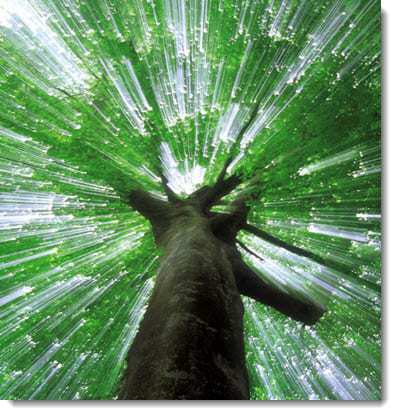These new quick response code labels make it possible for people to learn more about tree species.
The Rock Springs Nature Center has now been outfitted with a new project that is bringing it into the 21st century, by using QR codes to give visitors the opportunity to learn more about the trees they are seeing and what makes those various species special.
The barcodes have been posted on a number of trees in the conservation area for visitors to scan.
Visitors who have brought smartphones or tablets with them and who have downloaded and installed virtually any free barcode reader will be able to scan the QR codes in order to have more information about the tree species displayed on their screens. Using this technology makes it possible for the Nature Center to provide visitors with a wealth of knowledge that simply would not fit onto traditional signage that could be posted around the conservation area.
The QR codes go well beyond simply offering the common name of the tree that the viewer is examining.
 While traditional signage posts the tree’s common English name – such as the red mulberry, the honey locust, or the hackberry – the QRcode makes it possible to share information such as exactly how the leaves appear, what type of seeds they have and how they look, where this tree is most likely to grow, what other trees are related to it, as well as accompanying media such as images.
While traditional signage posts the tree’s common English name – such as the red mulberry, the honey locust, or the hackberry – the QRcode makes it possible to share information such as exactly how the leaves appear, what type of seeds they have and how they look, where this tree is most likely to grow, what other trees are related to it, as well as accompanying media such as images.
This is possible because when the quick response codes are scanned, the user is directed to a forestry website that was created by Southern Illinois University. According to the Macon County Conservation District executive director, Paul Marien, “We want to make sure people appreciate trees,” adding “So this is a way to really gain some awareness, to get that appreciation so people don’t just think of trees as a nuisance. Trees clean our air, and 75 percent of wildlife calls forests their home. Trees are a vital, renewable resource.”
QR codes are becoming increasingly popular in conservation areas, arboretums, hiking trails, and other areas where signage space is limited, but where visitors could benefit from a tremendous amount of information about the nature around them.
